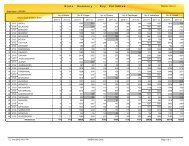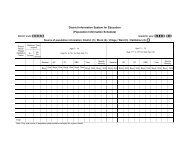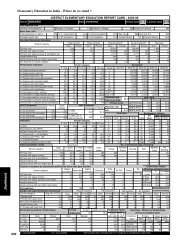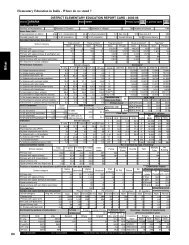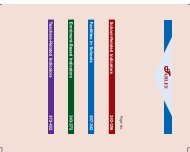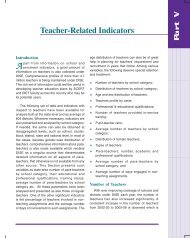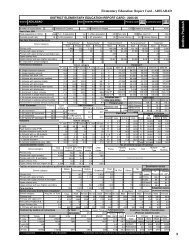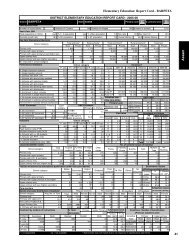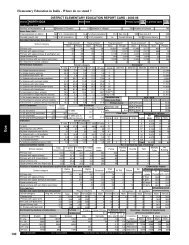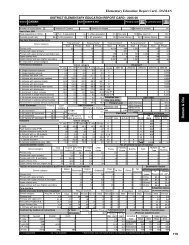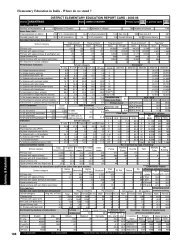Student Flow at Primary Level - DISE
Student Flow at Primary Level - DISE
Student Flow at Primary Level - DISE
- No tags were found...
Create successful ePaper yourself
Turn your PDF publications into a flip-book with our unique Google optimized e-Paper software.
56 <strong>Student</strong> <strong>Flow</strong> <strong>at</strong> <strong>Primary</strong> <strong>Level</strong>Madhya Pradesh, Rajasthan, Uttar Pradesh and West Bengal is quite wideand significant.Internal Efficiency of <strong>Primary</strong> Educ<strong>at</strong>ion SystemThe flow r<strong>at</strong>es presented above fail to produce any inform<strong>at</strong>ion about theinternal efficiency of the educ<strong>at</strong>ional system. In simple terms, efficiencycan be defined as an optimal rel<strong>at</strong>ionship between investment in terms ofinput years and output in terms of number of gradu<strong>at</strong>es the system isproducing. The best system is one which has both the input and outputexactly the same, which is known as a perfect efficient system. If a childremains in the system for two years then it is considered th<strong>at</strong> the systemhas invested two student years on th<strong>at</strong> child. On the other hand, everysuccessful completer of a particular cycle is termed as the output, whichis also known as the ‘gradu<strong>at</strong>e’.By using the following assumptions, the Reconstructed Cohort Method isused to obtain indic<strong>at</strong>ors of internal efficiency of an educ<strong>at</strong>ion system.Input-Output R<strong>at</strong>io, Coefficient of Efficiency and Input per Gradu<strong>at</strong>e (interms of years), have been presented for which two years enrolment andone year repe<strong>at</strong>ers d<strong>at</strong>a in the current year are used. Coefficient ofEfficiency is defined as the r<strong>at</strong>io of actual number of pupil-years to theideal number of pupil-years. R<strong>at</strong>io closer to one means better internalefficiency. The input-output r<strong>at</strong>io is simply the inverse of coefficient ofefficiency, and is equal to years put in per gradu<strong>at</strong>e divided by five whichis length of the primary cycle. The assumptions used are as follows:lllThe promotion, repetition and drop-out r<strong>at</strong>es presented above (basedon <strong>DISE</strong> 2004-05 and 2005-06 d<strong>at</strong>a) would remain constant throughoutthe evolution of the cohort;A student would not be allowed to continue in the system after he/she has repe<strong>at</strong>ed for three times; thereafter, he/she will either leavethe system or would be promoted to the next higher grade; andNo students other than the original ones would be allowed to enterthe cycle in between the system.The coefficient of efficiency presented above reveals th<strong>at</strong> the primaryeduc<strong>at</strong>ion system is efficient to the tune of only 62.40 percent. There is,therefore, much scope for further improvement as about 38 percent ofthe total resources are just going waste. In a few big st<strong>at</strong>es (Table 27),such as Bihar (51.50 percent), Uttar Pradesh (44.78 percent) and Rajasthan(53.18 percent), the coefficient of efficiency obtained is much lower thanthe average of all st<strong>at</strong>es. Much of the resources in these st<strong>at</strong>es are going




